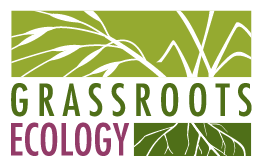Native Plant of the Month: Hairy Gumplant
/In just a few months, the heat of summer will arrive, and our spring wildflowers will have gone to seed. But amidst the dry grasses and desiccated shrubs, the hairy gumplant (Grindelia hirsutula) will still be in bloom.
Its sunflower-like blossoms face the sky like golden platters of pollen and nectar, which are constantly swarmed by minute sweat bees, fluttering skippers, and other insects.
Gumplants - sometimes known as gumweeds - are not often seen in the landscaping trade. Yet they rank among the top species for attracting pollinators, along with garden favorites like buckwheats and ceanothus. They also possess myriad medicinal qualities. The young flower buds exude a thick, sticky “gum” full of pungent, caterpillar-repelling compounds, which many Native American tribes use to treat poison oak rashes and other ailments.
Growing Hairy Gumplant at Home
Various gumplant species are found in diverse habitats throughout North America. The hairy gumplant (Grindelia hirsutula), which is native to the West Coast, is easy to grow and thrives in full sun.
It often occurs in dry, rocky scrublands or on exposed, grassy hills alongside fuchsia, coyote mint, yampah, blue-eyed grass, and soaproot. It is a small perennial, with our local varieties typically growing around 2 feet tall. Hairy gumplant is relatively late-blooming, with flowers appearing from May through September.
As the flowerheads mature and set seed, cut them back to promote additional flowering. Or you can leave them on a while longer for the birds to eat!
Where to Find Gumplant
Our nursery grows native plants including gumplants using seeds carefully sourced from local watersheds. Check out our latest inventory for online sales here:
By Stanley Gu, Ecologist




